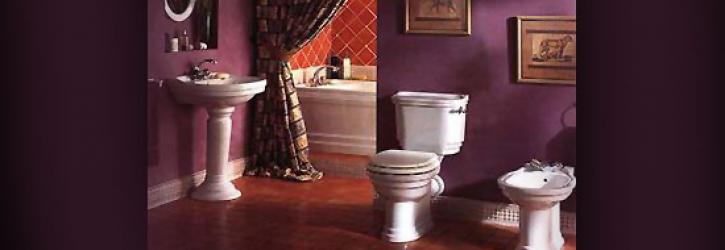ARE WE HAVING FUN YET?
Cleaning Ceramic Tile Walls Regular cleaning can be done with detergent and water, and rinsed; or commercial household cleaners or bathroom cleaners used according to label directions. Do not use scouring powders or other abrasives which can scratch the finish. Special cleaning may be needed for ceramic tile in bathrooms if there is a buildup of: soap scum, a rough white coating, or mildew.
Remove soap scum by sponging with a mixture of 1/2 cup packaged water softener, plus 2 tablespoons rottenstone plus 1 cup hot water; or use a solution of 1-2 tablespoons trisodium phosphate in 1 gallon hot water. Rinse.
Remove mildew by cleaning with a dilute solution of chlorine bleach in water, following label directions on bleach. Rinse. Or use a mildew-retardant household spray. The rough white coating is a buildup of mineral from hard water (like you get in a teakettle). Dissolve it with a commercial tile cleaner and wipe off.
Occasionally a dark varnish-like stain may build up in a tile shower that has not been cleaned regularly. It is a build-up of body oils and soap scum and very hard to remove. Cover the spot with full-strength liquid laundry detergent and let stand for a couple of hours. Then sponge with water. If it still doesn't all come off, leave detergent on longer and scrub with a brush. Don't use on porcelain enamel tubs or fiberglass or plastic surfaces as it may damage them.
Cleaning Porcelain Enamel: Bathroom fixtures can be cleaned in a solution of 1 tablespoon detergent to 1 gallon hot water or with a foam bathroom cleaner. Avoid using household cleaners which contain abrasives.
Bathroom fixtures should be disinfected weekly with a solution of chlorine bleach and water or a spray-on disinfectant or by using a disinfectant cleaning foam.
Removing Tub Appliques: Whatever method you use, first test the cleaning/removal material in an inconspicuous part of the surface the label is stuck on the be sure it will not damage that surface.
The appliques were made to put on the bottom inside of bathtubs and showers to make them less slippery and help prevent falls. They are made in three layers...the top layer that you see, a middle layer of Mylar film and a bottom layer of adhesive.
1. Carefully lift a corner of edge of each applique. Use your fingernail, a chisel-pointed cuticle stick or any rigid, sharp edged plastic or wood scraper to get it started.
2. Slowly pull up and peel back the applique making certain the two layers (top surface and Mylar film) remain together. Should the layers separate and the film tear as you progress, start and lift other corners around the applique, working toward the center until all portions are free. Cleaners and solvents will not eat through Mylar film.
3. After the appliques have been removed, there may be some bits of adhesive remaining on the tub surface. To this adhesive you may apply "Shout," "Spray-N-Wash," or "Magic Spray." Allow the adhesive to soak in one of these solutions for about half an hour. This will soften the adhesive to a rubbery consistency.
You can now wipe up the softened adhesive with a coarse, dry cloth. Or, you may thumb-roll the adhesive into small balls (much like rubber cement). For removing the adhesive, you may repeat the soak procedure several times. If you have difficulty trying to pull up and peel back the appliques, you may prefer to try the following procedure.
1. Lift several corners on each applique. Then apply a generous portion of "Shout," "Spray-N-Wash," or "Magic Spray" over the entire bottom of the tub. Since nothing will eat through the Mylar film, these solutions must get under the applique in order to work on the adhesive.
2. This time, allow the appliques to soak for about two hours. One of these solutions should soften the adhesive to a point where the appliques can be lifted easily from the tub surface and any remaining adhesive can be wiped up.
After following one of these above procedures...after removing the appliques and any remaining adhesive, you should then scour the tub thoroughly with a mild powdered cleanser (such as Bon Ami). Then rinse thoroughly and air-dry before installing new appliques.
If one of these solutions remains on the tub surface, your next set of appliques may not adhere well...thus, the scouring powder treatment.
Some tub manufacturers (such as fiberglass) recommend that powdered cleansers not be used on their tubs. Instead use liquid detergents, or baking soda and water, or all-purpose household cleaners.

